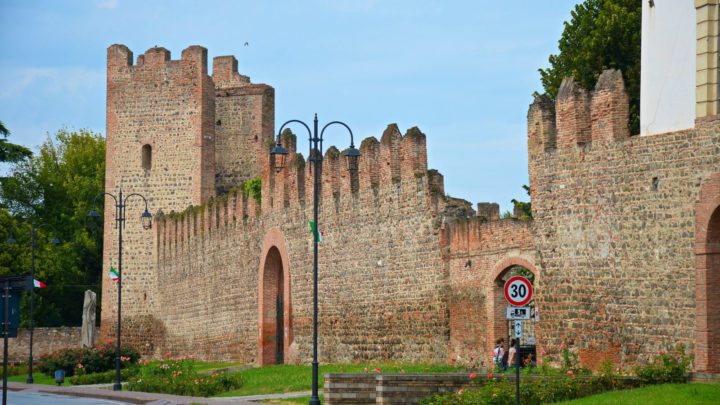‘Why you’ll want to visit Italy’s medieval walled city of Este’

I was already aware that Este was a name of much importance in ancient times. Villa D’Este on the outskirts of Rome, Italy taught me that.
We’re visiting the town from whence cometh the name. Along with Padua and others, it sat on a flood plain with, in the old times, water access for trading. That, and its position beside the Euganean Hills, made it a favourable location for settlement.
History has it that three war companions, Ossicella, Antenor and Ateste, escaped after the Trojan conquest and reached the Veneto. Each of them founded a city (respectively Monselice, Padova and Este). It became the most populated city in northern Italy a thousand years before Christ.
Then it was named Ateste and it straddled the river of that name, today called Adige, a fact which came to haunt it during a huge flood in 586 AD when the river’s course changed and moved about 19 kilometres south. One thing that always occurs in such events is that a lot gets buried, leaving archaeologists a bit of a treasure trove in later centuries.
Suddenly it was merely a small farming community and the city only re-emerged in the middle of the 11th century when a large defensive castle was built by the feudal lord Azzo II of the Estensi, a branch of the powerful Obertenghi dynasty. They held sway for more than 200 years before other dynasties came and went and then there was a devastating plague in 1633, reputed to have had up to a million casualties and probably the main cause of the downfall of the Venetian empire. That was followed by the fall of the republic and the Napoleonic Wars, which ended in Este being Austrian until 1866 until freed by the Third Independence War.
We arrive at lunch time, uncertain of exactly where to go, and pull up next to a mediaeval portal beside the Bisatto Canal, though it’s obscured by a line of buildings. There are a couple of eateries here and we choose Il Sirone, a lucky master stroke as it turns out to be a. the highest rated in terms of popularity and b. a dining experience with a charming chef who speaks English.
My partner Lorraine is in foodie heaven as she discusses the menu with him and we’re soon eating a dish heavily involving salmon, salad and aioli, followed by a yummy dessert. I have the last laugh, so to speak, when I purchase some homemade biscotti that adorns the counter near the till, from the chef’s wife who actually made it.
Just down the cobbled road is a war museum, but it’s closed and we drive only a block or two and we’re at the centre of town, the Piazza Maggiore. Running south is Matteotti Street that heads out through the clock tower of Porta Vecchia.
It’s normally the busy area but, of course, this is Mediterranean Europe and everything shuts at 1pm. There’s also a slight drizzle now and then so we head off to the 11th century walls that Azzo had built. Most of the interior these days is a garden and a lovely place to go for a walk.
The Carrara Castle (Castello Carrarese) is a rebuild of earlier ones and dates to 1339. Its walls stretch over a kilometre in length and the keep is located on the highest part of the hill, only accessible on special occasions. The castellations rise high above you as you stroll by the stone work but today the wall is a mere 10 metres high, around the 11th century it is believed to have been 30 metres tall — and still it was taken! Somehow, it’s good to wander around, past the statuary, and know this place isn’t on the mass tourism trail.


Through one of the exit portals we can see the clock face of the Civic Tower and that’s where we head next. The shops are still shut except for a couple of cafes and we sit and eat an ice cream each and recover a little from the day’s activities.
Time has caught up with us again and the Cathedral and the Basilica, both worth a visit, have to be overlooked. However, on the way out we are pulled up by the distinctly leaning Church of San Martino, one of around a dozen tilted towers in Italy alone. Three are in Pisa and two in Bologna, but Venice has four; I’ve also seen the one in Ravenna but this was one I was unaware of. Neither of the latter two seem to have made it onto anyone’s list, but it’s extraordinary to see the amount of lean and realise that it happened in the 15th century and it’s still standing!








 Proudly Australian owned and operated
Proudly Australian owned and operated